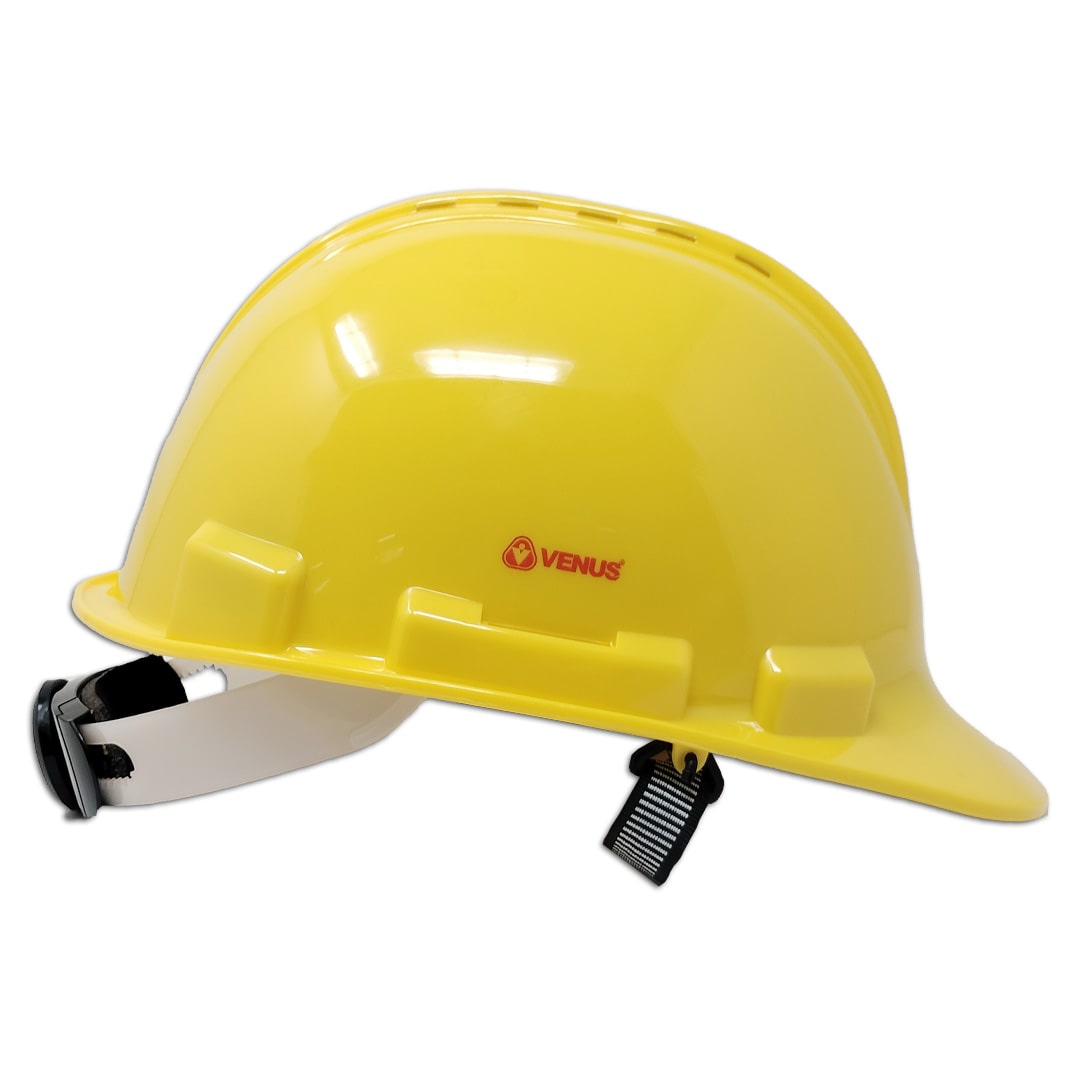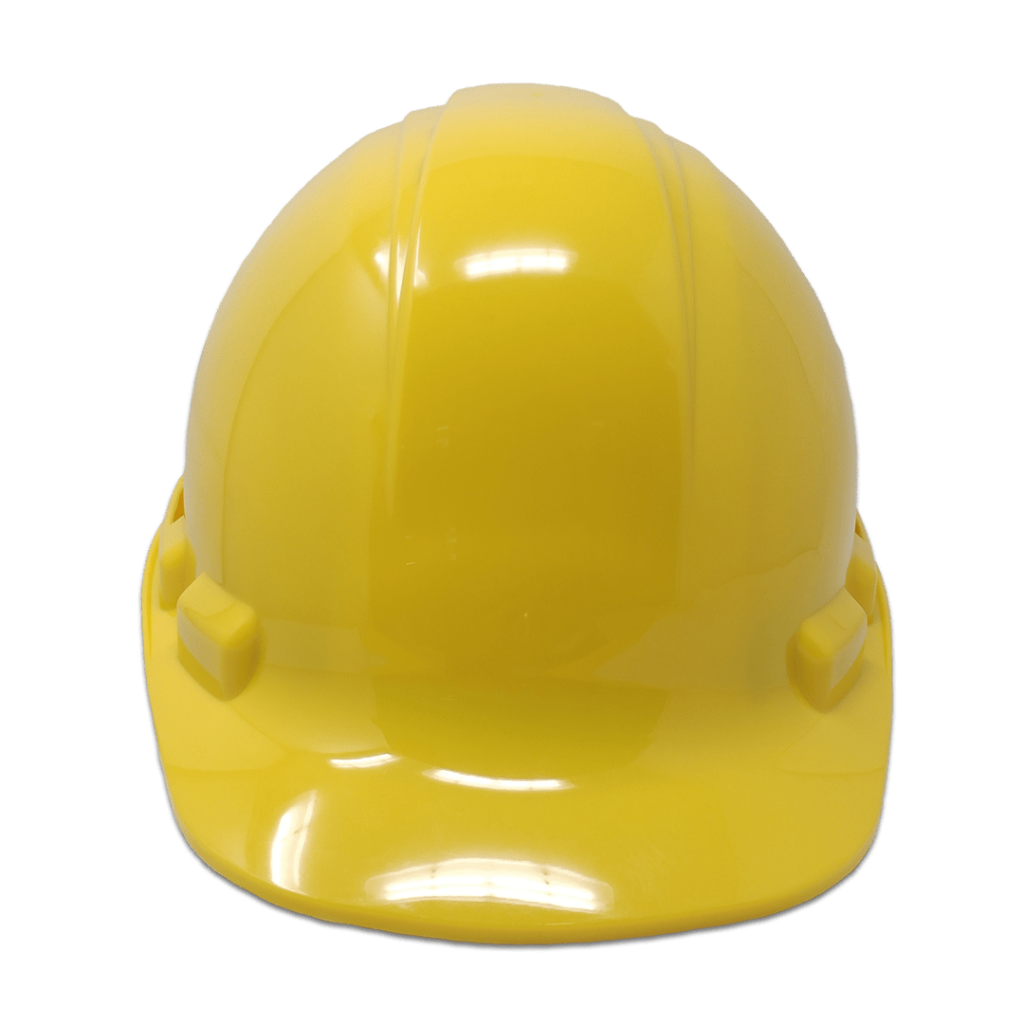Don’t Let Your Hard Hat Be a Hard Lesson: The Ultimate Replacement Guide
 July 25, 2025
10302
July 25, 2025
10302

Here’s a statistic that may surprise you: In 2012, over 65,000 cases involving days away from work occurred as a result of head injuries on the job, as recorded by the National Safety Council. What’s even more astonishing is that safety helmets were being worn by just 16% of the workers who experienced head injuries on the job. However, here’s a question that often gets overlooked: Do hard hats have an expiration date, and if they do, when exactly should they be replaced?
The truth is, many employees and even safety managers are unaware that industrial helmets have an expiration date. Like other safety gear, safety helmets will degrade over time due to exposure to UV rays, temperature fluctuations, and normal wear and tear. Knowing when and why to replace your safety helmet might quite literally be the difference between life and death at the work site.
As India’s construction sector expands and workplace health and safety laws become stricter, it is essential to know about the proper maintenance and replacement of protective gear. After all, according to the International Labour Organization (ILO), estimated annual figures indicate at least 60,000 deaths caused by accidents in construction sites around the globe, i.e., one death every ten minutes.

Why Do Hard Hats Expire?
The question of “why do hard hats expire” arises often in safety circles, and the reason is found in the material used to build them. Most safety helmets are manufactured from high-density polyethylene (HDPE) or other similar thermoplastic materials that degrade over time with exposure to environmental conditions.
UV radiation from sunlight is one of the biggest culprits in helmet degradation. Over time, ultraviolet rays break down the molecular structure of the plastic, making it brittle and less capable of absorbing impact. This process, called photodegradation, occurs gradually and is often not visible to the naked eye until significant damage has already occurred.
Extreme temperatures also contribute to helmet degradation. Whether due to the hot Indian summer or cold winter working environments, temperature changes can cause the plastic to expand and contract repeatedly, weakening the material structure over time.
Chemical exposure is another factor that influences the lifespan of helmets. In industrial settings where employees are exposed to solvents, acids, or other chemicals, the safety helmet shell can deteriorate much more quickly than it would otherwise.

Hard Hat Expiration: How Many Years Is a Safety Helmet Good For?
The question of how long is a hard hat good is not an easy one-size-fits-all answer. The U.S. American National Standards Institute/International Safety Equipment Association (ANSI/ISEA) Z89.1 and Canadian Standards Association (CSA) Z94.1, which govern the testing standards for hard hats and safety helmets in the U.S. and Canada, do not inherently set any expiration date for safety helmets.
However, most companies suggest replacement based on usage and environmental exposure. Safety helmets would have to be replaced after every 3-5 years under normal working conditions. This can change significantly depending on several factors.
For employees exposed to extreme environments, such as those working outdoors in the sun, in chemicals, or in very cold temperatures, the replacement rate may need to be increased. Some companies suggest annual replacement for exposed helmets.
The secret is realizing that the expiration date on the safety helmet is not merely time-based; it’s exposure and use. A daily-use helmet in extreme conditions will have to be replaced long before one that is infrequently used in a sheltered environment.

How To Check Your Safety Helmet Expiry Date
It’s really not as complicated as most people think to check their hard hat expiration date, but what to look for isn’t common knowledge. The manufacturing date is typically molded on the helmet itself, usually located inside the safety helmet under the headband section.
The date may be presented in an unusual format that is not immediately apparent. You’ll usually be looking at a group of numbers, and sometimes there will be arrows or other marks. The number signifies the month, and the orientation of an arrow or the position of the mark indicates the year.
For instance, if you notice the “3” with an arrow pointing towards “22” or a similar marking, it means the helmet was produced in March 2022. Another system uses a different methodology in which the year is indicated by the placement of the marking on a circle shaped like a clock.
Note that this is the date of manufacture of the helmet, not the expiration date. You must add the recommended lifespan by the manufacturer (usually 3-5 years) to know when it is time to replace.
If you cannot find the manufacturing date or if it has worn off, that is usually a sign that the helmet is old enough to be replaced. Don’t risk it with ambiguous or absent date stamps.

Signs It’s Time for Replacement
Beyond the hard hat expiration date, several visual and physical signs indicate immediate replacement is necessary. Understanding these warning signs can help prevent workplace injuries even if the helmet hasn’t reached its theoretical expiration date.
Physical cracks are the most apparent sign that a replacement is necessary. These will occur anywhere on the helmet, but most frequently happen at stress points such as the brim attachment or suspension mounting locations. Even fine cracks can negate the protective ability of the helmet.
Changing colors usually means UV damage. If your helmet is remarkably faded or has color-shifted, especially if it’s chalky or dull, this indicates that the material has been degraded due to sunlight. White or yellow helmets are especially prone to visible UV damage.
Dents or gouges that fail to return to their original shape are signs of permanent deformation. Although impact-absorbing, any helmet that has taken a hard blow should be discarded as soon as possible, irrespective of its age.
The internal suspension system within the helmet is just as critical. If the headband is cracked, the suspension straps are worn, or the adjustment mechanism is faulty, the helmet will not provide sufficient protection, even if the shell itself is intact.

The Cost of Delayed Replacement
When considering the lifespan of a safety helmet, the cost of replacement versus the potential damage caused by using faulty gear should be taken into account. The cost of a new industrial helmet is negligible compared to the cost of medical bills, lost production, and legal fees from a head injury on the job.
Between 2003 and 2010, 2,210 workers in construction were killed due to Traumatic Brain Injury (TBI) [a rate of 2.6 per 100,000 full-time equivalent workers], showing the enormity of the problem resulting from a lack of good head protection. Such data highlights the importance of the question, “Do hard hats expire?” in maintaining workplace safety.
In India’s rapidly expanding industrial market, businesses are coming under greater scrutiny to provide adequate safety gear. Wearing outdated or damaged helmets can result in regulatory fines, higher insurance premiums, and increased legal liability in the event of an accident.
Aside from the initial cost, there is also the human factor to consider. Head injuries can lead to permanent disability that not only affects the injured worker but also their families and communities. The relatively minimal investment in timely helmet replacements is a small price to pay compared to these possible effects.

Best Practices for Helmet Management
Proper helmet management is more than just monitoring the hard hat expiration date. It is the process of setting systematic procedures for inspection, maintenance, and replacement designed to provide uniform protection for all workers.
Enforce a regular inspection routine that includes both daily pre-use inspections by workers and more detailed periodic inspections by supervisors. This two-pronged strategy identifies issues early on while reminding workers of the importance of equipment maintenance.
Keep precise records of when each helmet was bought, issued, and replaced. This record not only assists in tracking replacement timelines but is also useful information for regulatory purposes and insurance claims.
Take environmental factors into account when determining replacement schedules. Helmets exposed to extreme conditions will probably require more regular replacements than helmets used under controlled conditions. Don’t just take manufacturer guidance; tailor your replacement schedule to your particular working environment.
Educate employees on good helmet maintenance and storage. Basic habits such as not exposing helmets to unnecessary heat, chemicals, or sunlight during breaks can significantly increase helmet longevity without compromising protection levels.

Moving Forward with Confidence
Knowing when to replace your safety helmet isn’t simply a matter of compliance; it’s about fostering a safety culture that protects your most valuable asset: your employees. By establishing clear guidelines for inspecting hard hat expiration dates and instituting systematic replacement protocols, you’re being proactive regarding workplace safety.
Keep in mind that the answer to the question “Do hard hats expire?” is a simple one: yes, they do. The real question is whether you’re ready to use that information. With good management and reasonable replacement, industrial helmets can be consistent sources of reliable protection throughout their service life, allowing workers to concentrate on their work instead of worrying about their head.
Investing in high-quality helmets and implementing regular replacement processes yields a payoff in fewer injuries, improved productivity, and a clear conscience. As India’s industry expands and safety regulations improve, businesses focusing on effective helmet maintenance will be better positioned for success and to protect their employees.


